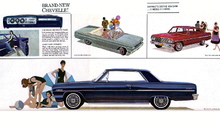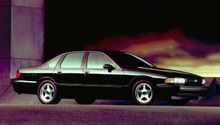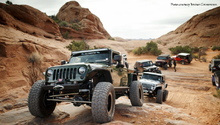Camaro and Firebird: Transmission Variation Guide
Curious about the different types of transmissions commonly found in F-Body cars? This article breaks down all the different ways you can shift gears behind your LS1 powered ride.
This article applies to the Camaro and Firebird (1990-2002).
Sure, everybody knows the difference between a manual and automatic transmission, but do you know the differences between the myriad gearboxes that have seen duty behind the venerable LS1? There were, in fact, a number of transmissions that have been employed to shift gears for the legendary small block, both of the manual and automatic variety, and all of them have their unique strengths and weaknesses. Depending on your budget and intended use for the car, there is a transmission to fit your unique situation. The most common, and the ones we'll discuss here, are the TH350/400, the 4L60E and 4L80E, the T56 Magnum, and the TR6060.
Automatic Transmissions
Newer Model 4L60E and 4L80E
GM automatic transmissions are pretty straightforward in nomenclature. Let's break down the 4L60E: 4 - the number of forward gears, L - longitudinal, for RWD architectures, 60 refers to torque capacity, i.e. 600 ft./lb torque, E - electronically controlled, i.e. not a fully mechanical automatic transmission.
Most LS owners are familiar with the 4L60E and 4L80E, which came as standard equipment on many of these cars. Both of these transmissions are overdrive units, meaning they are great for everyday road and highway use. Despite sharing some similar characteristics (and similar model numbers), these two automatic transmissions have some distinct differences as well. The 80 is quite a bit larger in physical size (as you can see below), which also means that it's a lot heavier. The 4L60E features a 27-spline output shaft vs. the 4L80E's 32-spline output shaft. While the 4L80E offers excellent torque capacity (over 700 ft-lbs in aftermarket applications), its extra weight is a downside. Plus, the added length means that modifications are needed in many applications to make it fit. Given the "E" designation, both of these gearboxes feature electrically-controlled lock up torque converters for lower cruising RPM and increased fuel efficiency.
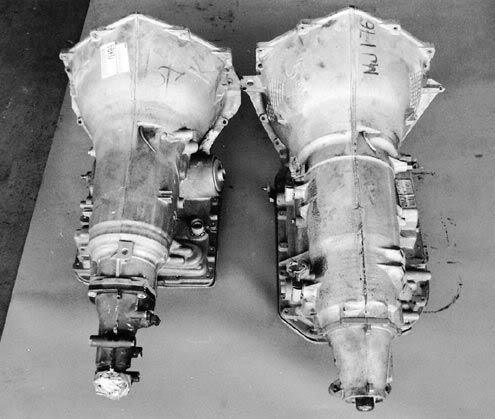
Older Model TH350 and TH400
Standing for "Turbo-Hydramatic," the TH series of automatic transmissions are the old guard of the bunch, having been in use for more than 50 years. These transmissions are originally mechanical, meaning that the torque converter could not be electrically controlled for lock up at cruise. Both the TH350 and the TH400 transmission are popular options in the aftermarket, especially among drag racers. Both are relatively old school transmissions that have been around for decades, but for good reason. Both are also lighter than both the 4L60E and 4L80E by a good 35 to 100 pounds. The TH350 is lighter than the TH400, and can be built up to handle similar power, but won't last as long under similar abuse. Installing either in an F-Body or Corvette isn't a direct swap, however, and generally requires several modifications. This can include a shortened driveshaft, modifications to the case and bell housing, and some wiring changes.
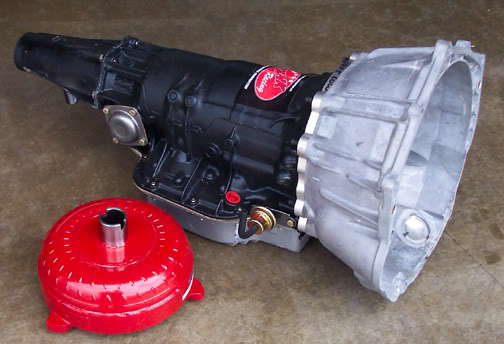
Manual Transmissions
T56 and TR6060
Both of these transmissions are 6-speed manuals, and quite robust in nature. While they are essentially the same transmission, there are a number of differences that set the T56 Magnum and TR6060 apart. The Magnum features a much larger bearing diameter and gear face width, a larger diameter 26-spline shaft, and longer input splines. Spring loaded, ball ball-type inserts offer less friction and reduced shift effort, and bronze lined synchronizers offer better shift quality and higher torque capacity than the older model's carbon paper lining. These and other modifications also lead to a stout 700 ft-lb torque capacity for the Magnum (vs. 450 for the TR6060), which makes it a strong option for virtually any street application. The beefier internal components also mean that it is more bulletproof under high stress situations like racing or even in the event of a missed shift.

Related Discussions
- 4L60E vs. 4L80E - LS1Tech.com
- TH350 vs. TH400, What's the Difference? - LS1Tech.com
- Differences Between the 4L60E Versions - LS1Tech.com

